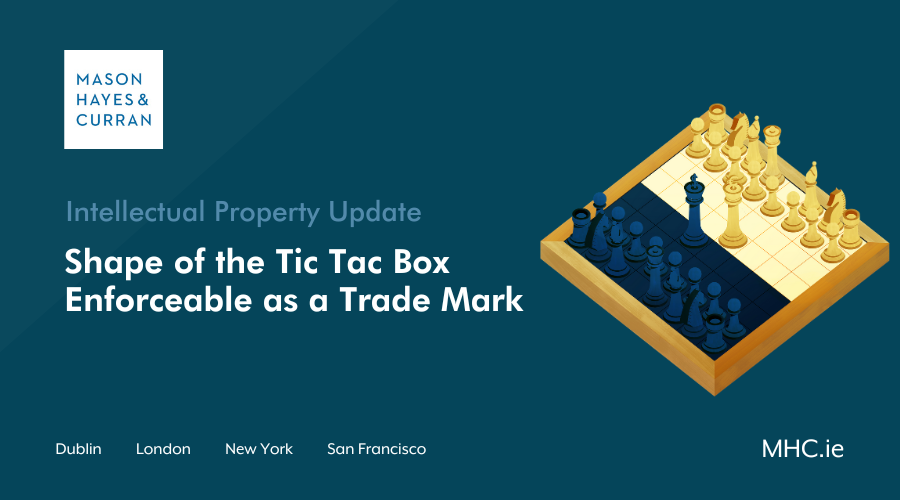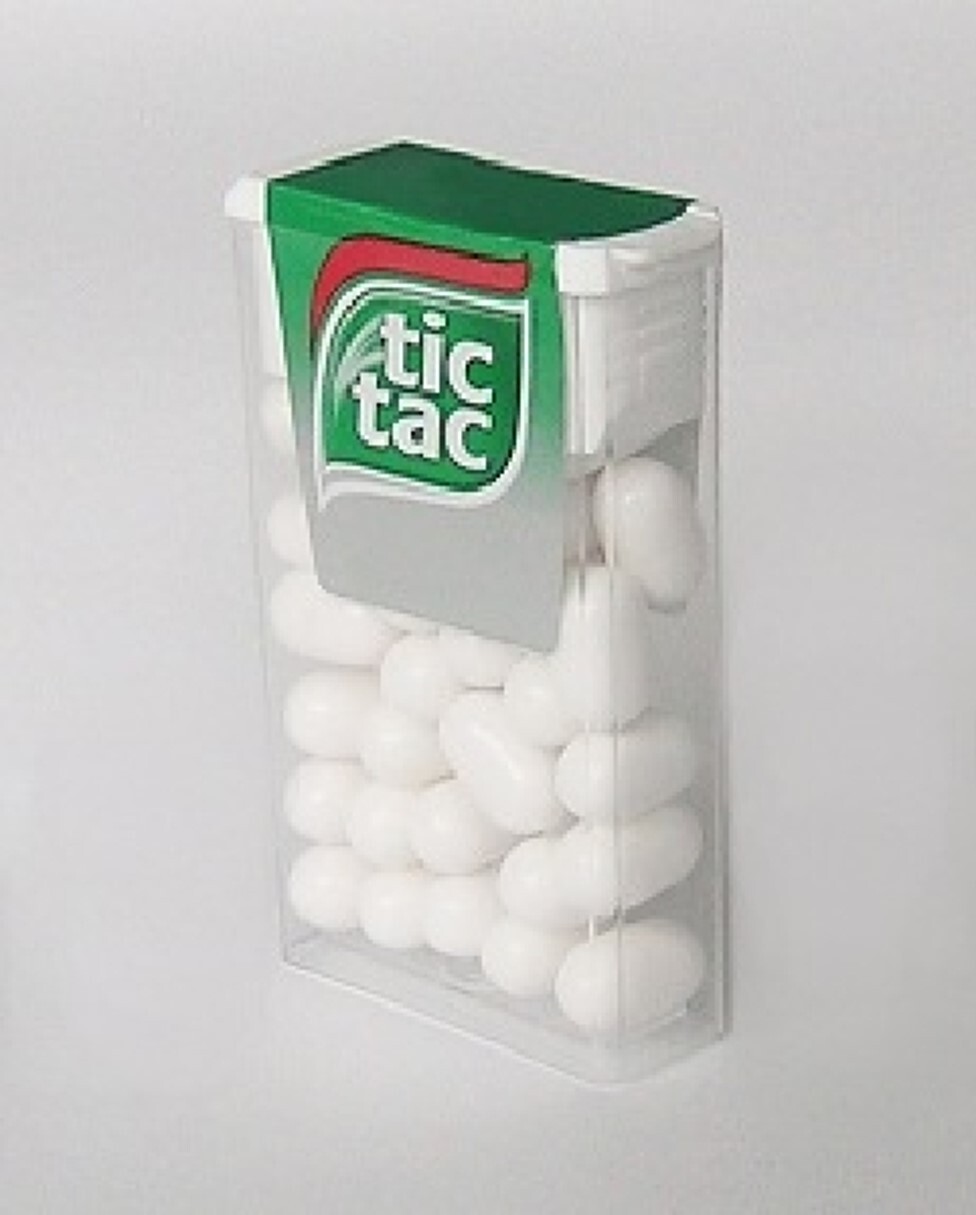Shape of the Tic Tac Box Enforceable as a Trade Mark
Italian Supreme Court Ruling

Further to our recent trade mark articles reporting on the shape of Absolut’s vodka bottle, Dior’s saddle shaped handbag and a confectionery product representing in the shape of a baby’s bottle, in a further recent shape mark case insight, the Italian Supreme Court has held that the shape of the famous Tic Tac box is also protectable and enforceable. The decision is arguably unsurprising as the Italian Supreme Court upheld the findings of the lower Courts in Italy. Going forward however, the decision will likely have significant implications for confectionery product producers and brand owners in the food and beverage sector more widely.
Background
Ferrero S.p.A. (Ferrero) is the manufacturer of the small whole mints called Tic Tac. These mints are sold in small transparent plastic boxes with a flip lid. To protect the shape of the product box, Ferrero has registered 3D trade marks in various territories worldwide, including as an EUTM, as depicted below, and as a national trade mark in Italy.

In 2017, Ferrero initiated proceedings in Italy claiming trade mark infringement and unfair competition against Mocca Spol. S.R.O. (Mocca). Mocca is another confectionery manufacturer, which was selling confectionery products in a very similar shaped small rectangular and transparent box.
First Instance and Court of Appeal
At first instance, the Court of Turin found in favour of Ferrero in a judgment dated 12 November 2019. The Court held that the product marketed by Mocca under its Bliki trade mark represented an infringement of the Tic Tac 3D trade mark owned by Ferrero. In addition, it constituted unfair competition, and the Court granted an injunction prohibiting the ongoing marketing and sales by Mocca. The Court of Turin held:
- The Italian Courts had jurisdiction to hear the case as Ferrero was enforcing two Italian trade marks, irrespective of the defendants nationality, domicile or residence
- Ferrero had proven marketing of the “Bliki” products in Italy by Mocca
- The ‘Tik Tac’ shape marks were valid and the shape of the box was not necessary to obtain a technical result
- There was also not a ground for invalidity due to the absence of novelty of the shape in question
- There was a likelihood of confusion arising as the competing signs were identical or similar with the resulting unfair economic advantage caused by the exploitation of the reputation of the well known Tic Tac trade marks, and
- Unfair competition by “slavish imitation” and confusion of the products had been established by Ferrero in Italy
Perhaps unsurprisingly, Mocca appealed the decision to the Court of Appeal. By decision dated 17 February 2021, the Court of Appeal of Turin dismissed the appeal and upheld the decision of the Court of Turin. Mocca then appealed to the Italian Supreme Court.
Supreme Court decision
The Supreme Court ultimately dismissed Mocca’s appeal and upheld the decisions of the lower Courts in Italy. It held that the Tic Tac box shape was only one of many shapes that a mint box could have, but equally, the box was not a shape that constitutes a pure solution to a technical problem, which would exclude it from trade mark protection. The Court also reiterated EU case law in this area which has repeatedly reaffirmed that a sign which represents the shape of a product, is suitable for trade mark protection provided it is:
- Graphically reproducable, and
- Suitable for distinguishing the product or service of one company from those of other companies
Where the shape of the mark resembles the shape that the product in question will most likely take however, the more likely it is that the shape will be deemed to be devoid of distinctive character. For that reason, the Supreme Court held that the CJEU had deemed the 3D EUTM consisting of the Rubik’s Cube would be invalid due to its so-called grid structure, which appears on each of its faces, dividing it into 9 square elements of the same size, and which performs a technical function, ensuring the rotation of the individual elements of the vertical and horizontal bands of the cube itself, so that the cube constitutes a 3D puzzle. In also referencing previous CJEU and ECJ decisions involving Nestle and Linde, the Supreme Court held that the law prevents the valid registration of a sign consisting, in its essential characteristics by a technical result, because there is a general interest in the use, which precludes situations of monopoly of technical solutions.
Comment
The decision of the Italian Supreme Court is a further evolution of the case law around the protectability of shape marks in the EU. Whilst the decision may be welcomed by brand owners in the food and beverage sector, it may also encourage more applicants to file trade mark applications for the shapes and designs of their product packaging. To avoid confusion, clearer guidelines and requirements are required by brand owners operating in the sector.
An interesting point explored in the judgment, is that a sign consisting of a shape which is similar to the shape of the product in question is likely to be devoid of distinctive character. Arguably, this makes the feasibility of obtaining a trade mark registration more difficult for brand owners to reach, but the benefits of obtaining a 3D registration for product shapes and packaging and the ability to enforce this against third parties indicates that a successful trade mark application for a product shape has a real value to brand owners.
For more information on successfully protecting your organisation’s intellectual property rights, contact a member of our Intellectual Property team.
The content of this article is provided for information purposes only and does not constitute legal or other advice.
Share this:



